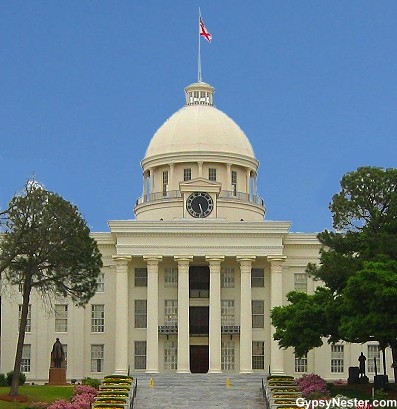
As the capital of Alabama, and former capital of The Confederate States of America, Montgomery is steeped in history, but for people of our generation its recent history is more transformational.
This is the city where Dr. Martin Luther King Jr. began his civil rights work.
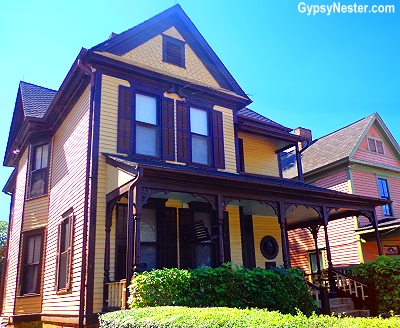
In 1954 Dr. King, at only twenty-five years old, he left his childhood hometown of Atlanta, Georgia.
He moved to Montgomery to become pastor of The Dexter Avenue Baptist Church.
Montgomery

A year later the young pastor found himself in the center of The Montgomery Bus Boycott, considered the beginning of the modern civil rights movement, when Rosa Parks refused to give up her seat on a segregated bus.
Our knowledge of these events was sketchy at best, so we decided to seek out some of the sites of these historic developments.
The Rosa Parks Library and Museum on the Troy University campus was our first stop. After chatting with a few of the students who staff the museum, we headed inside to the focal point of the presentation, a recreation of the bus Mrs. Parks was riding.
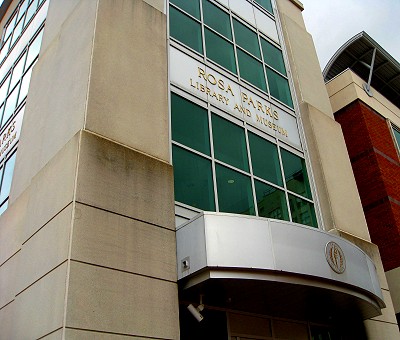 We entered a darkened room they call the Cleveland Avenue Time Machine, climbed aboard, and were taken for a ride through the years from Jim Crow in the 1800s to the Montgomery Bus Boycott in 1955 and 1956.
We entered a darkened room they call the Cleveland Avenue Time Machine, climbed aboard, and were taken for a ride through the years from Jim Crow in the 1800s to the Montgomery Bus Boycott in 1955 and 1956.
The Rosa Parks incident triggered the boycott, which began as a one-day event but ended up lasting over a year. Much of the planning and coordinating took place in the basement of Dr. King’s Dexter Avenue Church, and his involvement led not only to his arrest, but a bombing at his house.
Still he remained steadfast, and by the time the boycott was settled with the United States District Court ruling in Browder v. Gayle, he was established as one of the leaders of the civil rights movement and racial segregation on all Montgomery public buses had ended.
The success of the boycott led to the creation of the Southern Christian Leadership Conference, with Dr. King as president, and more efforts to end segregation and secure voting rights. The stories of those struggles are documented at The Southern Poverty Law Center and The Civil Rights Memorial Center.
The Memorial captured our attention as we walked from the church toward The Center.
The smooth granite circular slab is engraved around the outside edge with the names of people killed in the struggle for equal rights.
Water washes over the stone as a constant reminder of Dr. King’s words, “We will not be satisfied until justice rolls down like waters and righteousness like a mighty stream.”
Click here for more photos and info about The Civil Rights Memorial Center
The Memorial was created by Vietnam Veterans Memorial designer Maya Lin, who envisioned the plaza as “a contemplative area, a place to remember the Civil Rights Movement, to honor those killed during the struggle, to appreciate how far the country has come in its quest for equality, and to consider how far it has to go.”
Click here for more photos and info about The Civil Rights Memorial Center
Birmingham
For Dr. King the quest led to Birmingham, so we followed his trail to The Birmingham Civil Rights Institute, an affiliate of the Smithsonian. Set up as a walking journey, multimedia exhibits took us through the turbulent decades of the fifties and sixties while the powerful Oral History Project told us the stories from the actual participants, in their own voices.
Early in 1963 the Southern Christian Leadership Conference organized a campaign against segregation with the hopes of exposing the city’s continued injustices using nonviolent confrontation.
During those protests the Birmingham Police Department used high-pressure hoses and dogs against the protesters.
We found those moments captured in powerful statues by sculptor James Drake at the Kelly Ingram Park Freedom Walk.
The park, which served as a staging ground for many of the demonstrations, is just across the street from the Institute and The 16th Street Baptist Church. Drake’s works, such as Police and Dog Attack, and Firehosing of Demonstrators, put us right in the middle of each situation.
Click here to see more photos of Freedom Walk
It was while Dr. King was jailed during these protests that he wrote his famous “Letter from Birmingham Jail” advocating nonviolent civil disobedience, and by the end of the Birmingham campaign he was recognized as the leading voice of the civil rights movement.
Later that summer he led the march on Washington to give his iconic “I Have a Dream” speech.
Click here to see more photos of Freedom Walk
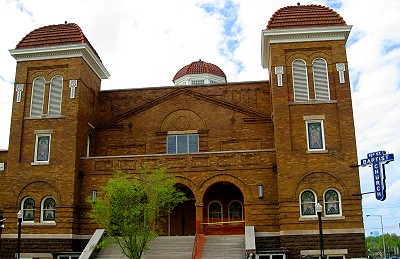
As the movement was making real progress in 1963, the worst days in Birmingham were still to come.
On a September Sunday morning four Klansman planted a bomb in the basement of The 16th Street Baptist Church and set it to go off during a youth meeting at the morning services.
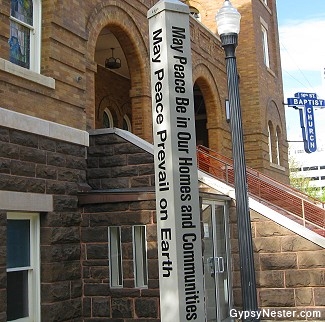
Four young girls were killed in the blast, but only one of the perpetrators was arrested.
He paid a small fine for illegal possession of dynamite.
No one else was arrested, tried or convicted for the murders until many years later.
Dr. King spoke to the more than eight thousand mourners of all races attending the funeral service, and the tragedy was instrumental in turning public opinion for the civil rights cause, ultimately leading to President Lyndon Johnson signing the Civil Rights Act of 1964.
Selma
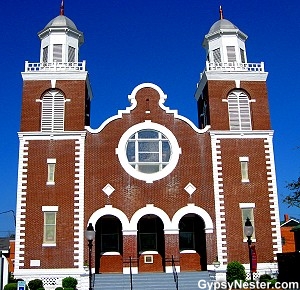
Equal rights was the law of the land but the struggle was not over.
Early in 1965, Selma, Alabama became the focal point for the next battle, voting rights. Dr. King and the Southern Christian Leadership Conference came to Selma hoping that a major event would help lead to national voting rights legislation in the same way that the Birmingham campaign helped to bring about passage of the Civil Rights Act.
They planned a march from Brown Chapel A.M.E. Church to the capitol building in Montgomery.
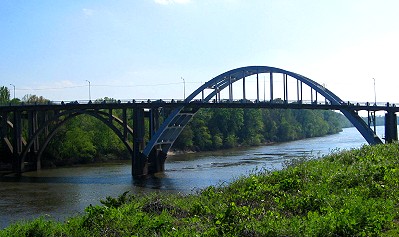
We entered Selma by crossing the Edmund Pettus Bridge, scene of Bloody Sunday, and proceeded on to the church.
This took us directly along the route taken on Sunday March 7,1965 by the six hundred people who were beaten and gassed as they tried to cross the bridge in their first attempt to march on Montgomery.
Two days later Dr. King led another march, this time only planning to go as far as the bridge, to prove the point that they had the legal right to do so on the authority of a Federal District Court Judge.
The third march left Selma on March 16th with just over three thousand people.
They walked about ten miles a day, sleeping in fields along the way, until reaching Montgomery on the 24th. By the time they arrived at the capitol building the group had grown to twenty-five thousand.
Atlanta
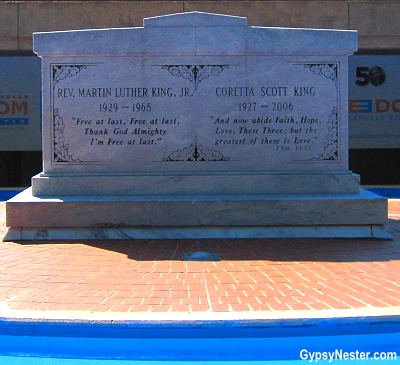
By retracing the path of the marchers we had returned full circle to the beginnings of Dr. Martin Luther King’s remarkable achievements.
But two years after Selma Dr. King’s life was cut short by an assassin’s bullet in Memphis. He returned to Atlanta, Georgia to be laid to rest at the Martin Luther King, Jr. Center for Nonviolent Change.

Along the way we came to understand the importance of bringing attention to these events, after being disconcerted by how little we knew of them before.
Our eyes were opened, not only to how much has been accomplished, but how much is yet to be.
Washington, DC
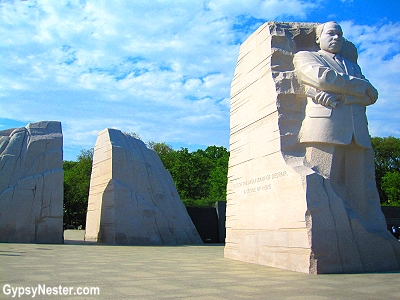
After over twenty years of planning and building, the Martin Luther King Memorial opened to the public in August of 2011, and is one of the few in Washington not dedicated to a president.
We passed through two huge stones that symbolize a mountain of despair, to the Stone of Hope, which is the centerpiece of the monument. The path was designed to signify the journey toward civil rights and named for the line from that famous speech “Out of a mountain of despair, a stone of hope.”
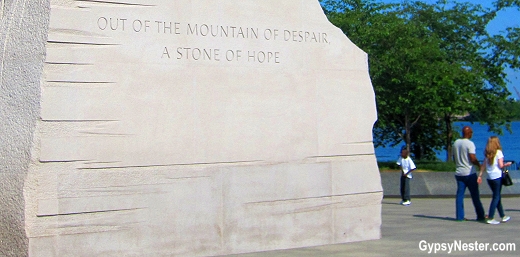
A relief of Dr. King is carved in the stone, and a granite wall is inscribed with lines from many of his sermons and speeches.
Oslo, Norway
Each year at the Nobel Peace Center in Olso, Norway a presentation delivers new information on the fiftieth anniversary of each recipient’s award.
All of these details are kept strictly secret until the required passage of five decades, so this is the first opportunity to see who else was nominated or may have come close to winning.
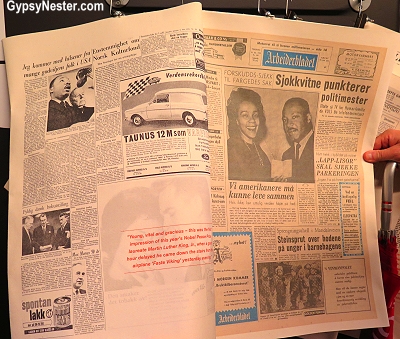
The most recent files released revealed the specifics behind Dr. King winning the prize in 1964, and we were fascinated by the process.
He was chosen from among forty-three candidates and became the youngest person ever to receive the award.
Boston
Dr. Martin Luther King Jr. received his Ph.D. at Boston University.
The steel and granite Free at Last sculpture in front of Marsh Chapel on the campus was created by Sergio Castillo and was dedicated in1975.
Towering twenty feet into the sky, Free at Last, is composed of birds taking flight – and once we backed away from the monument we realized the the flock takes the shape of a single bird headed for the sky.
David & Veronica, GypsyNester.com
Delve deeper:
The Freedom Walk in Birmingham
The Civil Rights Memorial in Montgomery
Retracing the Freedom Walk from Selma to Montgomery
The Martin Luther King Memorial in Washington, DC
The Nobel Peace Center in Oslo, Norway


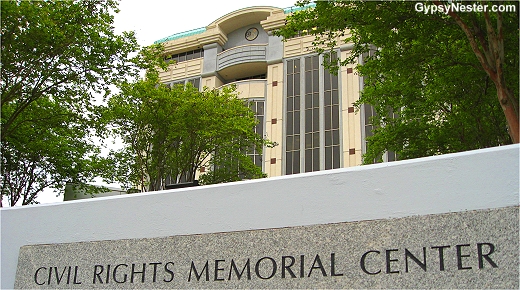
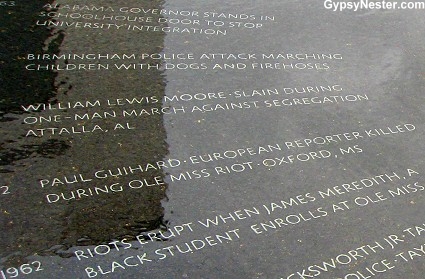
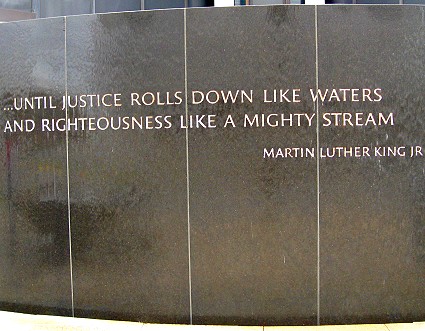
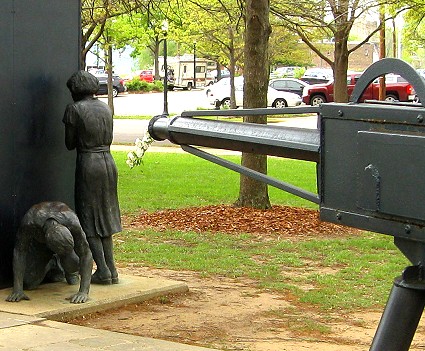

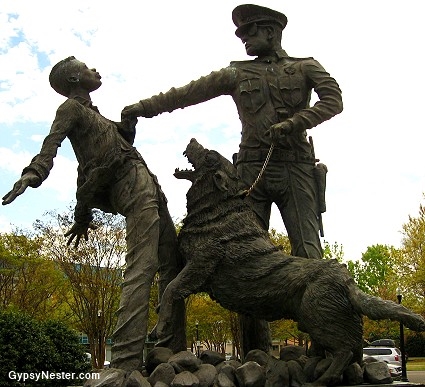
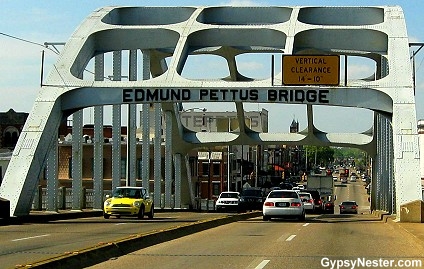
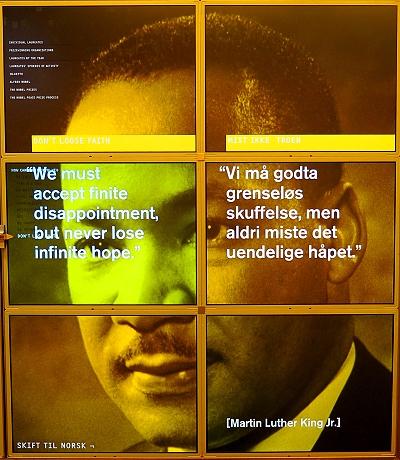
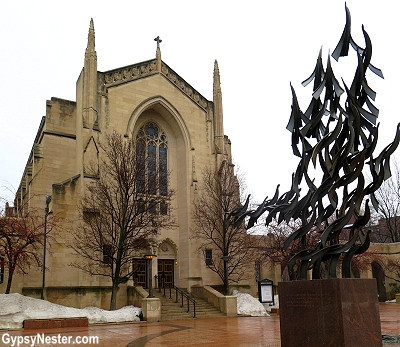

Hello. excellent job. This is a impressive story. Thanks!
This is the only area that we missed on our recent family sabbatical around the USA that disappoints me. We are going to make a point to fly back there soon as I think it’s hugely important to learn and understand about this time as an American family and it’s difficult to do so without being there in person. I really want to participate in the 50th anniversary Selma walk as well! Thanks for the great post!
Thanks Amy. We definitely got a much better feel for the history by being there.
Excellent post! I must admit that I don’t know enough of our own US history either. The south is certainly steeped in it.
Thanks Jennifer! There is always so much to learn.
GREAT post that caught my eye. Years ago, my mom was invited to join a group of African-American educators on a tour of civil right sites in Memphis. She was very moved by the tour which I believe included this museum. http://www.civilrightsmuseum.org/
Thanks, and thanks for the link. We did not know about the museum in Memphis, it looks like a must see. We’ll have to stop next time we go through there.
What great memorials to a gross yet powerful era of U.S. history. We’ve come far but I believe we can move further towards realizing Dr. King’s dream.
There is always more to do.
What a great and informative post on MLK and the Civil Right’s movement. This city is very rich in history. Thank you for sharing!
Thanks Mary, our pleasure!
You know, it would never have occurred to me to visit any of these places (except Atlanta). Thanks for the inspiration!
They are a little off the beaten path, but definitely worth a visit.
I love this article. I have never been to origins of Dr. Martin Luther King, but it really looks impressive. Great job of showing it to us.
Thanks Laura!
This is one of the best articles you have ever written and posted. Thank you so much for sharing this experience with the rest of us. It truly excites us to go and seek out these places for ourselves and pay homage to those who went before and established many of the freedoms we all enjoy as Americans. Thank you for putting your energy toward peace and equality.
Thank you Niyati, very kind. This experience was truly an education for us.
What a thought provoking story. Those statues in Birmingham are incredibly powerful.
They really are incredible.